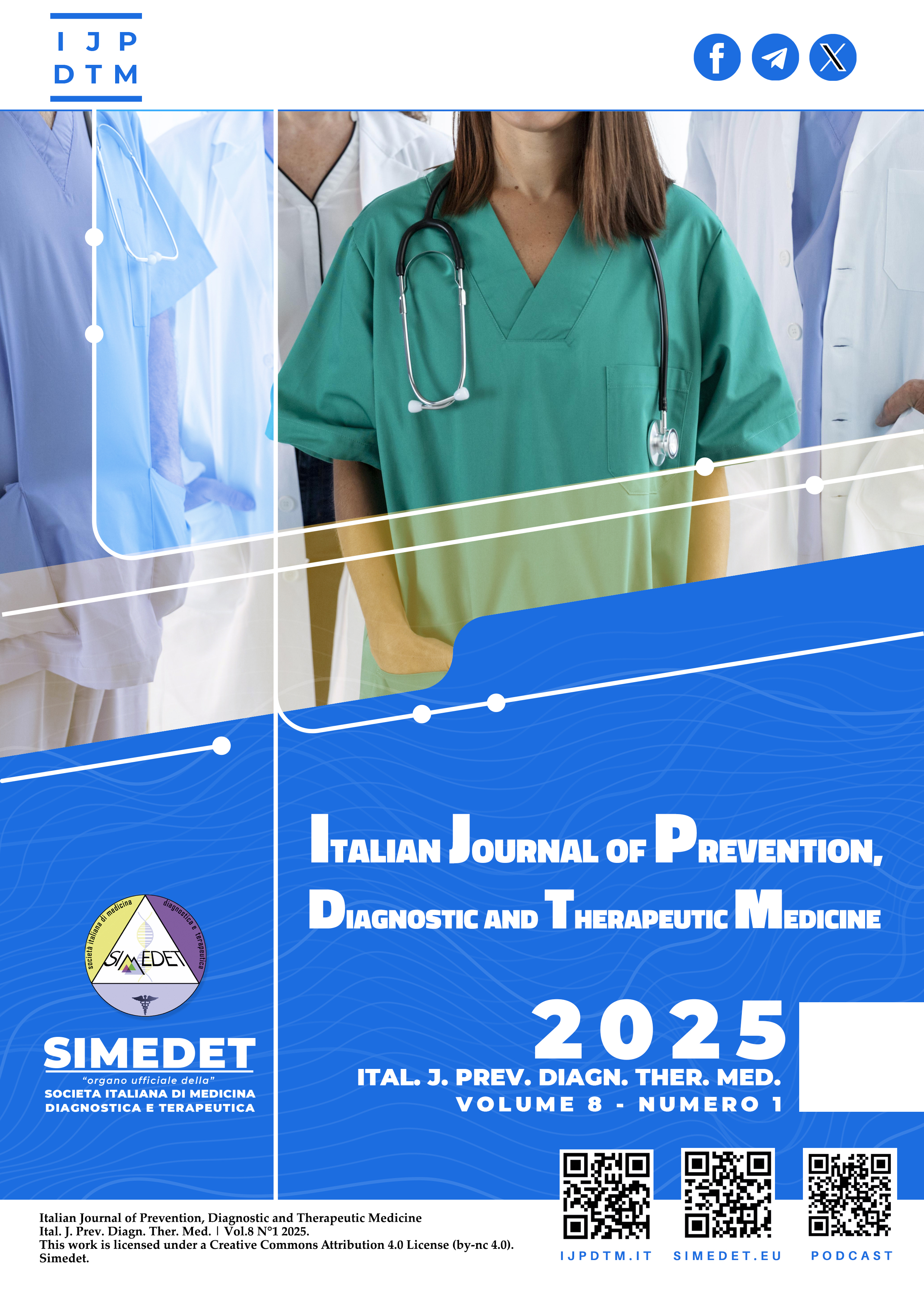Applications of artificial intelligence in nursing triage contexts a systematic review
Main Article Content
Abstract
Background: Triage is a nursing competence aimed at assigning a priority code to patients presenting to the emergency department and assessing their potential risk evolution based on observable and reported symptoms. The triage nurse must be highly skilled and trained according to existing national regulations. Triage is a crucial moment to ensure patient management and define the order of access to treatment. Artificial intelligence (AI) is having an increasing global impact, particularly in supporting healthcare activities. This systematic review aimed to evaluate the effectiveness of AI-based systems in the nursing triage process compared to traditional methods.
Methods: The foreground question was formulated using the PICO method. The research was conducted using three databases (PubMed, Cinahl, Scopus) following PRISMA guidelines. To include as many relevant studies as possible, five different keyword combinations were used (nurs*, triage, artificial intelligence). Studies published between 2019 and 2024, in both Italian and English, were considered for inclusion.
Results: A total of 12 articles were included. More than half of the selected studies present very recent data. The extracted data primarily focused on study objectives, methodologies, measured outputs, and obtained results. In each included study, the findings were derived from a comparison between the performance of the described, proposed, or developed AI technologies and traditional triage procedures. The main limitation of this review is the limited availability of scientific literature on the subject.
Conclusions: The use of artificial intelligence in nursing triage is a rapidly evolving field with evident potential, particularly in optimizing nursing workflow. However, as this area is still expanding, most AI-based applications described and studied require further testing and refinement before being widely implemented. Overall, the findings from the reviewed studies are highly promising.
Downloads
Article Details

This work is licensed under a Creative Commons Attribution-NonCommercial 4.0 International License.
References
Chen, J.-Y., Hsieh, C.-C., Lee, J.-T., Lin, C.-H., & Kao, C.-Y. (2024). Patient stratification based on the risk of severe illness in emergency departments through collaborative machine learning models. The American Journal of Emergency Medicine, 82, 142–152. https://doi.org/10.1016/j.ajem.2024.06.015
• Defilippo, A., Veltri, P., Lió, P., & Guzzi, P. H. (2024). Leveraging graph neural networks for supporting automatic triage of patients. Scientific Reports, 14(1), 12548. https://doi.org/10.1038/s41598-024-63376-2
• Ivanov, O., Wolf, L., Brecher, D., Lewis, E., Masek, K., Montgomery, K., Andrieiev, Y., McLaughlin, M., Liu, S., Dunne, R., Klauer, K., & Reilly, C. (2021). Improving ED Emergency Severity Index Acuity Assignment Using Machine Learning and Clinical Natural Language Processing. Journal of Emergency Nursing, 47(2), 265- 278.e7. https://doi.org/10.1016/j. jen.2020.11.001
• Jacob, J. (2023). ChatGPT: Friend or Foe?--Utility in Trauma Triage. Indian Journal of Critical Care Medicine, 27(8), 561–564. https://doi.org/10.5005/jp-journals-10071-24498
• Kim, D., Oh, J., Im, H., Yoon, M., Park, J., & Lee, J. (2021). Automatic Classification of the Korean Triage Acuity Scale in Simulated Emergency Rooms Using Speech Recognition and Natural Language Processing: A Proof of Concept Study. Journal of Korean Medical Science, 36(27), e175. https://doi.org/10.3346/jkms.2021.36.e175
• Kipourgos, G., Tzenalis, A., Diamantidou, V., Koutsojannis, C., & Hatzilygeroudis, I. (2022). An Artificial Intelligence Based Application for Triage Nurses in Emergency Department, Using the Emergency Severity Index Protocol. International Journal of Caring Sciences, 15(3), 1764–1772
• Levine, D. M., Tuwani, R., Kompa, B., Varma, A., Finlayson, S. G., Mehrotra, A., & Beam, A. (2024). The diagnostic and triage accuracy of the GPT-3 artificial intelligence model: An observational study. The Lancet Digital Health, 6(8), e555–e561. https://doi.org/10.1016/S2589-7500(24)00097-9
• Liu, X., Lai, R., Wu, C., Yan, C., Gan, Z., Yang, Y., Zeng, X., Liu, J., Liao, L., Lin, Y., Jing, H., & Zhang, W. (2024). Assessing the utility of artificial intelligence
throughout the triage outpatients: A prospective randomized controlled clinical study. Frontiers in Public Health, 12.https://doi.org/10.3389/fpubh.2024.1391906
• Mayerhoffer, H. (2024). The Future of Triage: The Analysis of Traditional Methods Compared to ChatGPT. Croatian Nursing Journal, 8(1), 29–36. https://doi.org/10.24141/2/8/1/3
• Morse, K. E., Ostberg, N. P., Jones, V. G., & Chan, A. S. - (2020). Use Characteristics and Triage Acuity of a Digital Symptom Checker in a Large Integrated Health System: Population-Based Descriptive Study. Journal of Medical Internet Research, 22(11), https://doi.org/10.2196/20549
• Page MJ, et al. BMJ 2021;372:n71. doi: 10.1136/bmj.n71
• Saban, M., & Dubovi, I. (2024). A comparative vignette

